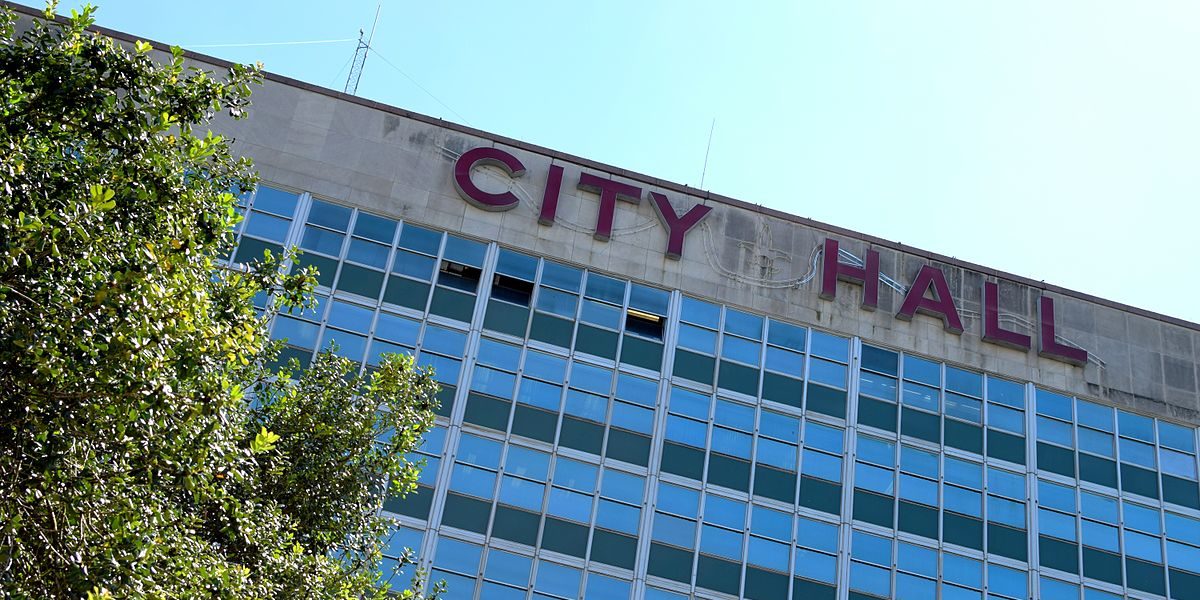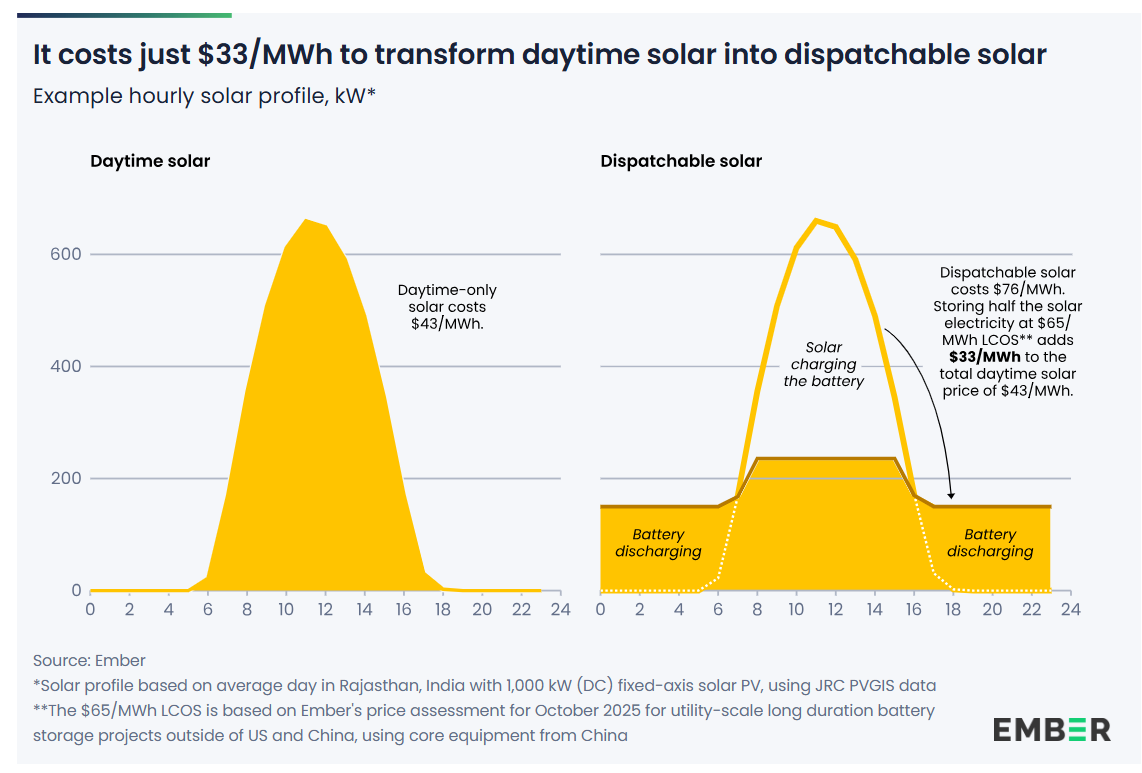Yesterday the New Orleans City Council unanimously permitted Entergy New Orleans to go ahead and build the gas plant that it wants, with a $5 million slap on the wrist.
As I’ve written before, this was a predictable outcome.
The New Orleans City Council has no idea what it is doing in terms of regulating Entergy. It never has. City Council members are not elected on the strength of their knowledge of utility law, regulation, or any other applicable field, and few have any background which relates to their task. The current chair of the Utilities Committee, Helena Moreno, is a former broadcaster.
Instead, the City Council hires consultants who typically have a cozy relationship with Entergy, which just happens to be one of two Fortune 500 companies in Louisiana and the only one in the city.
New Orleans and Louisiana are legendary for political corruption, and when I worked for The Alliance for Affordable Energy we documented the campaign contributions that these consultants were making to council members. This is likely only scratching the surface; in a city with little economy outside of tourism, there are all the makings of a pay-for-play government.
But to say that this is a problem of New Orleans or Louisiana would be misleading. It would be forgetting the kinds of actions that we have seen in other states, where regulators have either demonstrated inappropriate relationships with utilities, or have done the bidding of these companies while acknowledging that they didn’t look at other options.
We need to be questioning how the model of regulating monopoly utilities is working overall in this era of a rapidly changing electricity system. Because from what I have seen, corruption and regulatory capture are far more prevalent than we would like to believe.
Regulatory capture
Regulatory capture, according to Investopedia, is “an economic theory that says regulatory agencies may come to be dominated by the industries or interests they are charged with regulating. The result is that the agency, which is charged with acting in the public’s interest, instead acts in ways that benefit the industry it is supposed to be regulating.”
In an article for Emory Law, Attorney Scott Hempling puts a little bit finer of a point on this, noting that regulatory capture is not the same as corruption:
Regulatory capture is neither corruption nor control. Corruption and control are actions of the regulated entity. Regulatory capture is characterized by the regulator’s attitude, not the regulated entity’s actions. A regulator is “captured” when he is in a constant state of “being persuaded”: persuaded based on a persuader’s identity rather than an argument’s merits. Regulatory capture is reflected in a surplus of passivity and reactivity, and a deficit of curiosity and creativity.
It is evidenced by a body of commission decisions or non-decisions—about resources, procedures, priorities, and policies, where what the regulated entity wants has more influence than what the public interest requires.
And while the “dark money”, improper communication scandals and an FBI investigation around the Arizona Corporation Commission and the actions of former regulators in Wisconsin could be attributed to simple corruption, such capture can be seen in Michigan regulator’s decision to green-light another gas plant proposed by DTE Energy despite evidence of cost savings through deploying other alternatives, with one regulator openly admitting that the body did not take a careful look at other proposals.
Overspending on the grid, killing rooftop solar
In my conversations with Michael O’Boyle, the director of electricity policy at Energy Innovation, he has described an “information asymmetry” wherein regulators simply lack the knowledge to be able to determine which utility investments are needed to serve their customers or not, and which allows over-investment by utilities with the aim of achieving maximum returns for shareholders.
This may be far more widespread than any of us realize. According to USA Today’s coverage of a recent report by Brattle Group, an estimated $8 billion in savings could be achieved in five years if major transmission projects were merely opened to competition. But there is also the question of whether all of this transmission is needed in the first place, as shown when distributed energy resources and energy efficiency saved California ratepayers $2.6 billion by allowing new transmission projects to be deferred.
And in many cases, while utilities are overspending on T&D, they are not only keeping retail rates from falling in line with wholesale cost declines, but are also doing their damnedest to kill distributed solar with fixed charges, special fees and a variety of other rate mechanisms. And while regulators typically don’t approve everything that utilities want, the net result is a creep towards rate structures that disadvantage rooftop solar.
A political solution is needed
As PG&E’s recent bankruptcy and the increasing volume of blackouts due to severe weather events shows, utilities are increasingly in danger of not delivering on their societal promise to deliver safe, reliable power. But our model of regulating these monopolies is also failing.
There is a lot of work going on now to reform the utility business model in states like New York and Rhode Island, but in these processes the utilities also hold a great deal of sway, including through the aforementioned information asymmetries. And utilities and their shareholders do not want to change; they don’t want to lose their good deal of getting a predictable, safe 8-10% return on capital invested, and more for transmission.
This demonstrates that the field on which this problem must be addressed is primarily not technocratic; it is political, and the realities of what it will take to meaningfully address climate change alone will dictate that we move faster than utilities have supported to date. It is going to take the political will to wrest power away from these economically parasitic monopolies, and it can’t come soon enough.
The views and opinions expressed in this article are the author’s own, and do not necessarily reflect those held by pv magazine.
This content is protected by copyright and may not be reused. If you want to cooperate with us and would like to reuse some of our content, please contact: editors@pv-magazine.com.








Christian, this article opens interesting questions… and “regulatory capture” is extremely troubling in the US, but is it helpful to broad brush all utilities [&/or their state level regulators] as equals and effectively throw all of them under the bus equally?
New transmission [planned or deployed] in New York, Michigan, Iowa, Minnesota, Nebraska, Oklahoma, Texas, North Dakota has unlocked enormous potential for wind [first], solar & storage [to follow]. Investments in distribution systems are needed to smarten things up – that are not just solved by DG solar added willy-nilly.
You used a Brattle Report [that’s very broad brushed] and John Weaver’s article specific to California to … throw every effort under the bus. Ironically, I have to pull a [ancient] Brattle Report “Dispelling 7 Myths of Dynamic Pricing” from Ahmed Faruqui – http://files.brattle.com/files/6373_dynamic_pricing_of_electricity_and_its_discontents_faruqui_aug_3_2011.pdf to counter solar DG promoters’ efforts to scuttle NY’s efforts to bring “dynamic, transactive pricing” [currently available within ISO/RTOs] to the distribution grid via VDER, where it is needed to support all DER technologies equally… as no single one alone will be able to the job alone in NY (or New England for that matter).
I might disagree with you on DTE’s Gas Plant, as it will “kill” their coal plants with finality just like Consumer’s NG plants did their “7 Sisters” coal plants, and just like your Rhode Island, Connecticut, Massachusetts & New Jersey “killed” their coal plants… while NY keeps it old, dirty “dual fuel” steam boilers open, because everyone is against NG & CCGTs in NY.
Yes, please do highlight the bad actors, but please do stop throwing those [not DG solar] under the bus for their contributions towards our efforts of lowering our carbon emissions.
Interestingly, John Weaver asked “[if I] could refine an article like that and tweak it for solar related stuff and pv magazine usa would be interested.”, however I cannot “tweak” it for solar as solar alone is not the solution in unto itself – and the players involved [albeit unmentioned] are embracing “all of the above” technologies – where both NG & transmission are positive enablers to our transition efforts.
Hello Hans,
My understanding of the phrase “throw under the bus” is that it implies betrayal, and betrayal implies a relationship. As someone who writes about solar, I’m no ally of the utilities. I’ve seen utilities consistently lie and distort facts to try to stop rooftop solar. Furthermore, I don’t believe that their shareholders have any right to a guaranteed 8-10% return on the back of investments which may or may not be needed. Nor do I believe that monopolies are healthy.
As for the regulators; they are elected and/or appointed to serve the public. If they do the will of the utilities instead, that’s a violation of their duty as public servants.
As for the prevalence of this type of failure, I cited four different states where regulation has failed recently. We’ve had corruption in Arizona and Wisconsin, and we have regulatory capture in New Orleans and Michigan. I could cite more; in Florida the utilities were successful for years in stopping distributed solar, despite the obvious benefits of peak shaving in hot climates where AC is prevalent. This had consequences for both the environment and for ratepayers.
I’ve also seen the interests of utility shareholders mis-aligned with the public in the case of NRG. A power company CEO (David Crane) who tried to embrace the energy transition was removed by his shareholders, who wanted short-term profit.
In all of these instances where the will of shareholders is not aligned with the public and future generations, whose side did you think I would be on?
But the point of this is really regulatory capture, and I’ve seen this near everywhere I’ve reported. As I noted, in New York and Rhode Island, reforms are slowed because the utilities hold all the cards, information-wise.
We’re to seven states now. So while regulation does seem to be working in some states (California comes to mind), how many instances of regulatory capture and corruption are required before we deem our model of regulation a failure?
As for the gas plants: you consistently argue that gas is killing coal. This has certainly happened in the past, but in New England gas does not appear to be playing a meaningful role anymore; in fact the coal and petroleum plants are still lying around and are used during cold spells.
In both Michigan and New England, new gas won’t play any role in reducing emissions that wouldn’t be better served by renewables. The regulators could have forced DTE to build renewables, storage and other clean energy solutions as has been done in California and as was proposed by stakeholders. Instead we are getting more fracked gas, and the fugitive emissions alone make that a dubious bet for the climate.
Finally, as to the article by John Weaver, that article references a CAISO report which finds that DG solar, batteries, and other “non-transmission alternatives” saved ratepayers $2.6 billion in deferred transmission. Here’s the original document, and on page 2-3 you can see that 18 projects were canceled, with 21 more delayed, for a total savings of $2.6 billion.
http://www.caiso.com/Documents/RevisedDraft2017-2018TransmissionPlan.pdf
I don’t think there is much point arguing specifics further. I don’t think our difference here is the facts of the case, it is that you and I aren’t coming from the same place, and that can’t be resolved by clever arguments.
– Christian
Thank you Christian for an accurate report
Entergy profits selling 1900’s bulk, remote, electric power. Entergy is taking advantage of the City Council people of New Orleans selling expensive and unnecessary power generation. Shame on Entergy!
Entergy hates distributed solar generation, the low-cost, emission-free, resilient power solution. Why? They want captive accounts and increasing rates.
Thermal power plants and natural gas from fracking operations are 20th Century, obsolete, and destructive designs.
Power outages in a hot world are due to severe storms, floods, and other extreme weather events.
Transmission and distribution lines and outdoor power transformers are not resilient. Poles and wires come down every time.
These high-energy weather events are caused by burning oil, natural gas, and coal.
Power outages can easily be avoided by promoting customer and community-owned grid-tied solar power, providing excess generation during peak hours.
Grid-storage is a better way to provide peak power, using new grid-scale storage technologies.
What is the difference between New Orleans and Baton Rouge?
“The Louisiana Public Service Commission has approved a deal for Entergy Louisiana to buy the output of a 50 MW solar project to be built in West Baton Rouge Parish. The facility, to be built by LA3 West Baton Rouge LLC, a subsidiary of Eagle Solar Group, will be built on about 560 acres of land near Port Allen. Construction is expected to start in mid-2019, with completion in 2020.
“This is a win for customers of Entergy Louisiana and a win for the environment,” says Phillip May, president, and CEO of Entergy Louisiana. “Our generating portfolio is among the cleanest in the nation. Entergy’s CO2 emission rate is the fourth-lowest among the top 20 power producers. This 20-year agreement is one more step in our commitment to look to renewable energy resources to offer our customers clean, reliable and economic energy.”
“Louisiana Regulators Green-Light Entergy Solar Agreement”
February 22, 2019
solarindustrymag.com/ louisiana-regulators-green-light-entergy-solar-agreement
I find the article accurate and utilities have certainly captured the Florida PSC which still has a law no one can sell electricity to anyone except utilities or to utilities.
And here they are overbuilding generation and a recent turn to solar to try to preempt rooftop solar.
But 2 things is solar costs are dropping fast for homes, buildings that will grow no matter what as our lowest cost power under $.06/kwh and dropping no utility can compete with retail, the only price
that counts, greatly cutting utility demand.
And a new constitutional amendment coming up for a popular vote to open competition on our market like Texas has. Last solar one got 70%+ of the vote.
Thus clean utilities, mostly tracking solar as our main resource , along with east coast coastal heat driven wind covering the duck and some tidal, biomass with their lower costs, will thrive.
Add homes, building solar, battery, CHP, EVs sucking up excess power and supplying on demand power and FF investor owned utilities are in big trouble as their demand crashes stuck with stranded assets..
Christian,
I’m impressed with your activism, in the spirit of Gary Groesch. Keep it up. I’m in New York, Chair of the Henry George School of Social Science Education Committee. We are having a seminar on the Amazon deal collapse and what NYS/NYC should do different for the next big tax break deal comes along. I’m also about to get published an international standard practice on infrastructure management, that requires cities to have community engagement when things like power infrastructure are proposed for change. Trouble is, cities would have to agree to adopt it, but that’s something for an activist to use to run for office.
Marty
Thanks Marty! Good to hear from you. And send along your paper on infrastructure management – it sounds interesting.
Never sent attachments in LinkedIn. Send me your email to my work email. By the way, I reached out to Helena Moreno after you mentioned her in your piece. Surprised she’s a council member at large. She once interviewed Brad Ott and me about Charity Hospital closing, on her program.